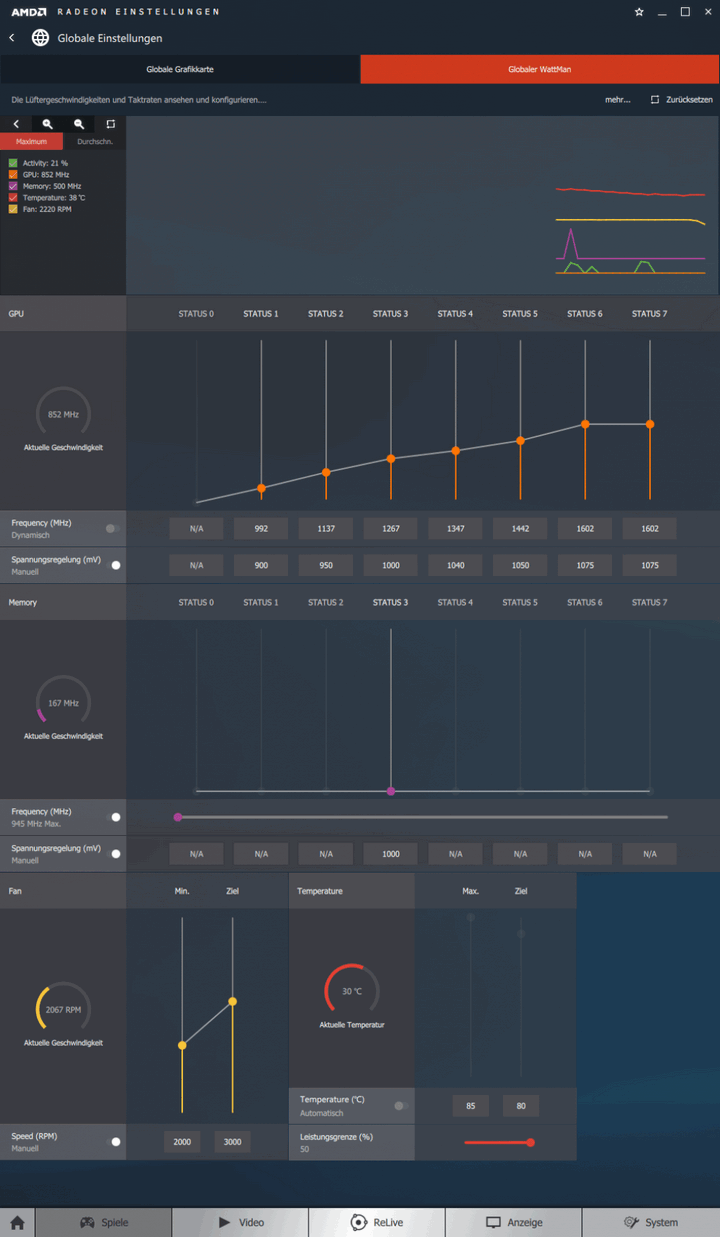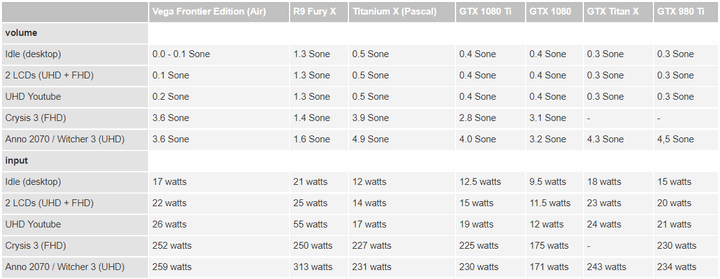OOPS! You forgot to upload swfobject.js ! You must upload this file for your form to work.
The graphics processor Vega 10 can overclock to 1600 MHz and at low voltages
![]()
|
xtreview is your : Video card - cpu - memory - Hard drive - power supply unit source |
|
|||
|
|
||||
 Recommended : Free unlimited image hosting with image editor
Recommended : Free unlimited image hosting with image editor
|
xtreview is your : Video card - cpu - memory - Hard drive - power supply unit source |
|
|
|
|
||
|
Xtreview Support  N-Post:xxxx Xtreview Support        |
THE GRAPHICS PROCESSOR VEGA 10 CAN OVERCLOCK TO 1600 MHZ AND AT LOW VOLTAGES |
| Please Feel Free to write any Comment; Thanks  |
AquaComputer introduced the water block Kryographics VEGA (2017-08-30)
AMD continues to demonstrate the capabilities of its processors using NVIDIA graphics cards (2017-08-23)
Special price when buying three graphics cards a new way to deal with miners (2017-08-22)
The packaging of AMD Vega 10 graphics processors is handled by two different contractors (2017-08-17)
AMD Navi will open the way to multi-chip graphics processors (2017-08-11)
New evidence of the existence of Intel processors with graphics system AMD (2017-08-02)
Intel UHD Graphics 620 is the result of renaming, not of cooperation with AMD (2017-08-02)
We study the composition of the sets based on AMD Radeon RX Vega graphics cards (2017-07-31)
Sales of processors and graphics solutions increased AMD revenue by one and a half times (2017-07-26)
AMD Navi graphics architecture will open in the corporate segment (2017-07-24)
The graphics processor Vega 10 can overclock to 1600 MHz and at low voltages (2017-07-17)
NVIDIA is increasingly convincing about support for DirectX 12 graphics processors Fermi (2017-07-06)
Micron managed to significantly increase revenue from the implementation of memory for graphics solutions (2017-06-30)
Graphics processors for Radeon RX Vega video cards have already begun to arrive for AMD partners (2017-06-20)
Technological standards of 7 nm will give life to two generations of graphics solutions AMD (2017-06-08)
Intel processors with AMD graphics will be required by Apple (2017-06-06)
EVGA prepares the GeForce GTX 1080 Ti K series graphics card kngpn Edition (2017-05-26)
The share of discrete graphics solutions is growing steadily (2017-05-26)
Intel denies the intention to use AMD graphics in its processors (2017-05-19)
The head of the graphics division AMD offers to wait for the release of the gaming Vega (2017-05-18)
![]()
To figure out your best laptops .Welcome to XTreview.com. Here u can find a complete computer hardware guide and laptop rating .More than 500 reviews of modern PC to understand the basic architecture


7600gt review
7600gt is the middle card range.
We already benchmarked this video card and found that ...

 geforce 8800gtx and 8800gts
geforce 8800gtx and 8800gts  Xtreview software download Section
Xtreview software download Section  AMD TURION 64 X2 REVIEW
AMD TURION 64 X2 REVIEW  INTEL PENTIUM D 920 , INTEL PENTIUM D 930
INTEL PENTIUM D 920 , INTEL PENTIUM D 930  6800XT REVIEW
6800XT REVIEW  computer hardware REVIEW
computer hardware REVIEW  INTEL CONROE CORE DUO 2 REVIEW VS AMD AM2
INTEL CONROE CORE DUO 2 REVIEW VS AMD AM2  INTEL PENTIUM D 805 INTEL D805
INTEL PENTIUM D 805 INTEL D805  Free desktop wallpaper
Free desktop wallpaper  online fighting game
online fighting game  Xtreview price comparison center
Xtreview price comparison center Lastest 15 Reviews


Rss Feeds
Last News
- The new version of GPU-Z finally kills the belief in the miracle of Vega transformation
- The motherboard manufacturer confirms the characteristics of the processors Coffee Lake
- We are looking for copper coolers on NVIDIA Volta computing accelerators
- Unofficially about Intels plans to release 300-series chipset
- The Japanese representation of AMD offered monetary compensation to the first buyers of Ryzen Threadripper
- This year will not be released more than 45 million motherboards
- TSMC denies the presentation of charges from the antimonopoly authorities
- Radeon RX Vega 64 at frequencies 1802-1000 MHz updated the record GPUPI 1B
- AMD itself would like to believe that mobile processors Ryzen have already been released
- AMD Vega 20 will find application in accelerating computations
- Pre-orders for new iPhone start next week
- Radeon RX Vega 57, 58 and 59: the wonders of transformation
- ASML starts commercial delivery of EUV-scanners
- The older Skylake processors with a free multiplier are removed from production
- Meizu will release Android-smartphone based on Helio P40
- AMD Bristol Ridge processors are also available in American retail
- The fate of Toshiba Memory can be solved to the next environment
- duo GeForce GTX 1080 Ti in GPUPI 1B at frequencies of 2480-10320 MHz
- New Kentsfield overclocking record up to 5204 MHz
- Lenovo released Android-smartphone K8

HALO 3 HALO 3 - Final Fight!

PREY Prey is something you don t often see anymore: a totally unigue shooter experience.

computer news computer parts review Old Forum Downloads New Forum Login Join Articles terms Hardware blog Sitemap Get Freebies




